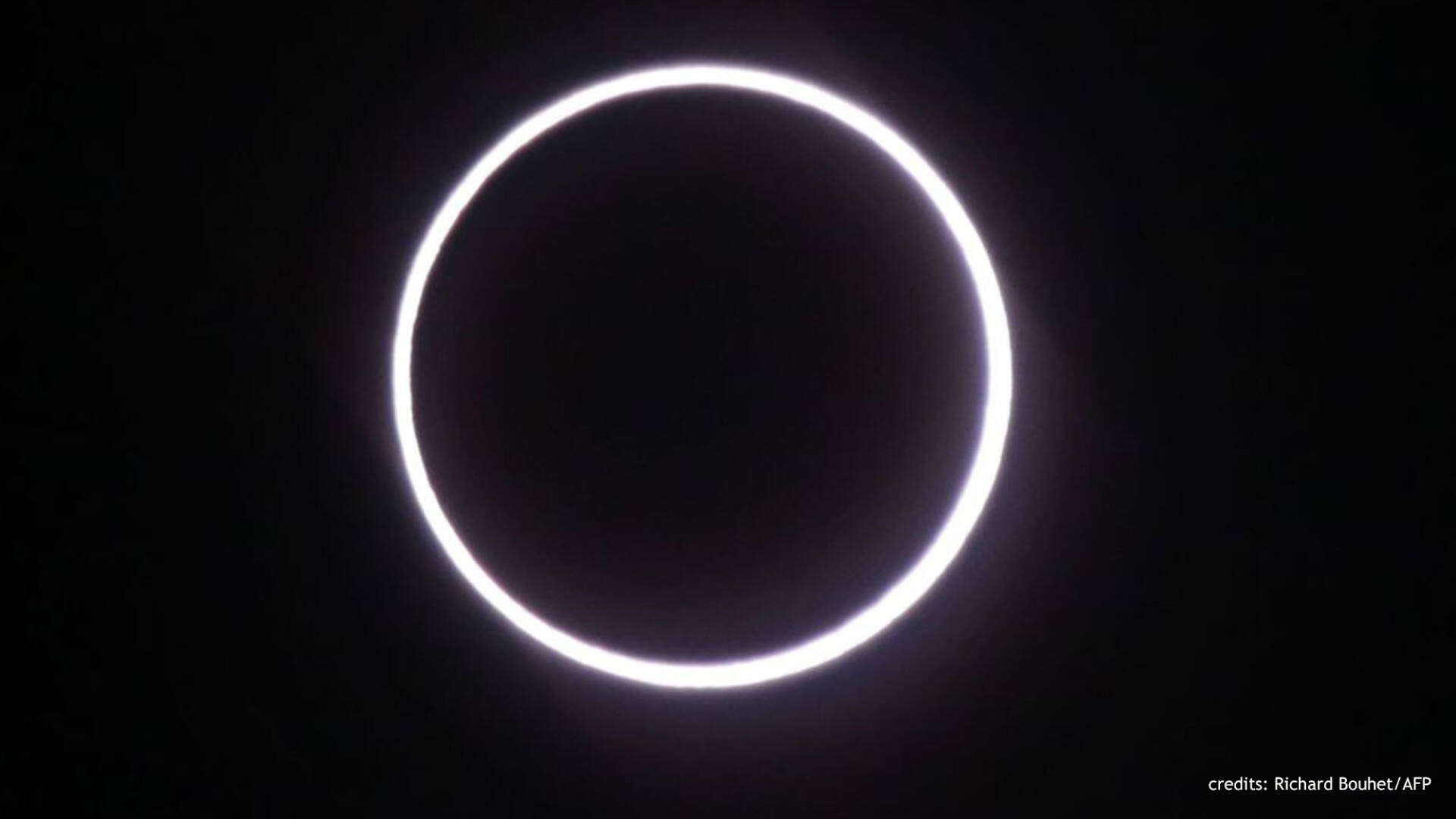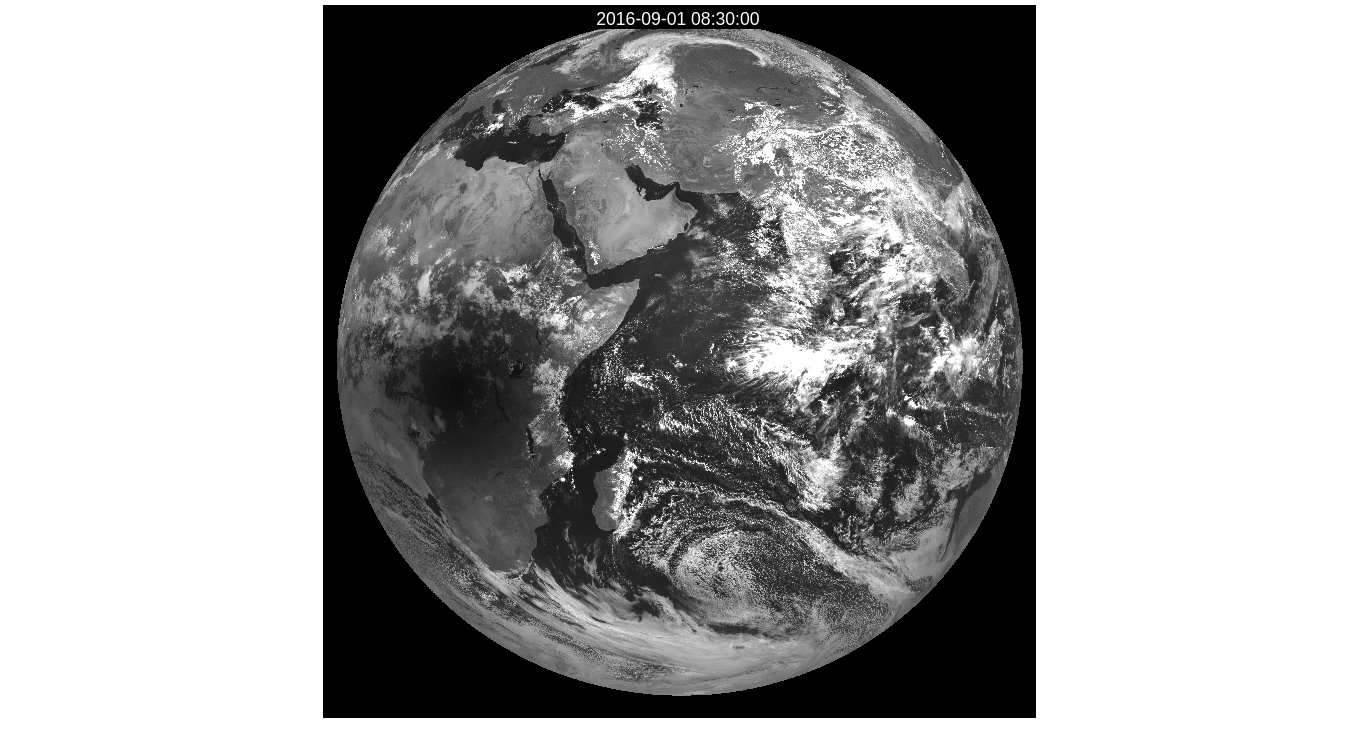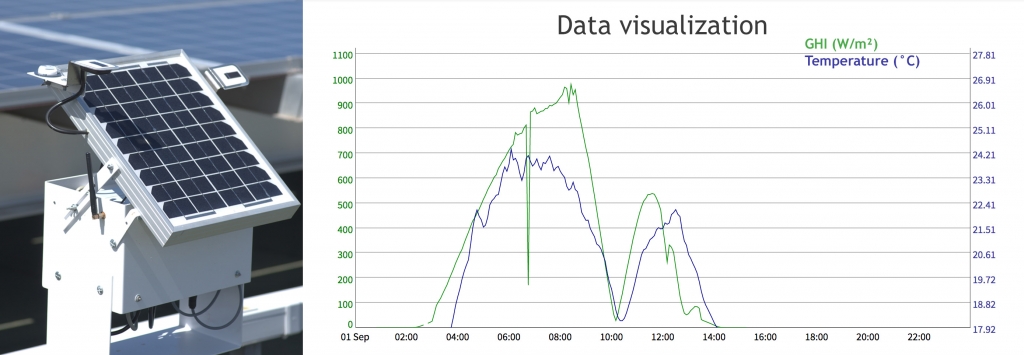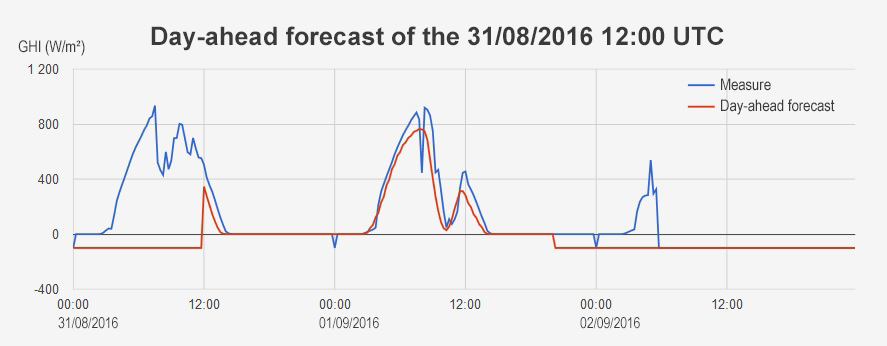On September 1st, 2016, Reunion Island was on the front row to witness an extraordinary astronomical show: an annular eclipse. How did this rare event impact the photovoltaic generation, and the management of the local power grid?
The Moon gradually blotted out the Sun in the morning of September 1st, successively casting its shadow from Equatorial Africa to the south of the Indian Ocean. Located in the centrality band, Reunion Island was the spectator of an annular eclipse (the Earth being too far from the Moon for a total eclipse to occur). Up to 95% of the Sun’s visible area was hidden by the Moon between 14:09 and 14:11 (local time in La Réunion). The ground temperature and luminosity were considerably affected by the event, which lasted a total of 3 hours and 20 minutes.
The geostationnary satellite Meteosat 7, which permits Reuniwatt to provide live assessment of the ground solar radiation as well as forecasts for the Indian Ocean area, enabled us to observe in real-time the spectacular movement of the Moon’s shadow during the eclipse:
The eclipse seen from the satellite Meteosat 7.
Credits: Eumetsat
Our many S3G weather stations installed on the island made it possible to follow the evolution of weather parameters like GHI (global horizontal irradiance) – the intensity of the solar radiation at ground level – and temperature during this particular day, as shown on the graph below. The S3G stations, developped by Reuniwatt, are little weather stations embedding all the sensors of interest for solar industrials. Thanks to their solar panel and their battery, they are fully energy-autonomous. Moreover, the measurements are uploaded live on the cloud.
GHI and temperature measurements by the S3G, on September 1st in Reunion Island.
As shown on the graph, the luminosity gradually decreased then increased again between 08:30 and 11:30 UTC. The interval between the increase of the luminosity and the one of the temperature is caused by the thermal intertia of the environment.
Reuniwatt’s team also worked on the prediction of the phenomenon, while taking into account the Moon’s trajectory in the computation of the photovoltaic generation forecasts, provided by Soleka. The graph below shows the forecasts for a site in La Réunion, computed on August 31st at 12:00 UTC (16:00 local time), for the next day, the one of the eclipse:
Day-ahead forecast for the eclipse’s day, computed on 31/08/2016 at 12:00 UCT.
By taking into account the lunar trajectory, we have been able to efficiently predict the eclipse’s impact on the generation of solar plants. Such forecast was crucial for the grid operator to properly handle the balancing of Reunion’s power grid during the event. The solar generation indeed decreased by 100 MW, which represents 25% of the island’s load.



